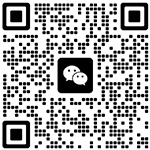If you're a tech enthusiast or an electronics hobbyist, you're likely familiar with the 74HC14 IC. This versatile integrated circuit is widely used in a variety of electronic projects, thanks to its ability to handle multiple functions such as signal processing, wave shaping, and pulse generation. One of the crucial aspects of working with the 74HC14 IC is understanding its pinout, which determines how it should be connected to other components in a circuit. In this blog, we'll delve into the 74HC14 pinout, offering a comprehensive, step-by-step guide to help you make the most of this powerful IC in your projects.
The 74HC14 IC comes in a standard 14-pin dual in-line package (DIP), and each pin serves a specific function. Let's start by discussing the pinout diagram of the 74HC14 IC to gain a better understanding of its layout and functionality.
Pin 1 (A1): Input 1 for the first Schmitt trigger Pin 2 (Y1): Output 1 for the first Schmitt trigger Pin 3 (A2): Input 2 for the first Schmitt trigger Pin 4 (Y2): Output 2 for the first Schmitt trigger Pin 5 (A3): Input 1 for the second Schmitt trigger Pin 6 (Y3): Output 1 for the second Schmitt trigger Pin 7 (A4): Input 2 for the second Schmitt trigger Pin 8 (Y4): Output 2 for the second Schmitt trigger Pin 9 (A5): Input 1 for the third Schmitt trigger Pin 10 (Y5): Output 1 for the third Schmitt trigger Pin 11 (A6): Input 2 for the third Schmitt trigger Pin 12 (Y6): Output 2 for the third Schmitt trigger Pin 13 (GND): Ground Pin 14 (VCC): Power supply voltage (+5V or +3.3V)
Now that we've familiarized ourselves with the 74HC14 pinout, let's discuss how to effectively integrate this IC into your electronic projects. Understanding the pinout is crucial for proper connectivity and functionality of the IC within a larger circuit. Whether you're designing a simple waveform generator or a sophisticated signal processing module, knowing how to connect the 74HC14 IC is essential.
To make the most of the 74HC14 IC, consider the following steps when working with its pinout:
Step 1: Identify the specific inputs and outputs required for your project. Refer to the pinout diagram to determine the connections for each Schmitt trigger within the IC.
Step 2: Ensure proper power supply connections to Pin 14 (VCC) and Pin 7 (GND). This step is vital for the overall functionality and stability of the IC.
Step 3: Connect the input signals to the corresponding input pins based on your circuit design. Take care to observe the polarity and voltage levels to prevent damage to the IC.
Step 4: Use the output signals from the 74HC14 IC as required in your circuit, keeping in mind the logic levels and signal conditioning necessary for seamless integration.
By following these steps and understanding the 74HC14 pinout, you can harness the full potential of this IC in your electronic designs. Whether you're a beginner or an experienced electronics enthusiast, mastering the pinout of the 74HC14 IC is a fundamental skill that opens up a world of possibilities in your projects.
In conclusion, the 74HC14 IC, with its versatile functionality and adaptable pinout, continues to be a staple component in numerous electronic applications. Understanding its pinout is key to leveraging its capabilities effectively. With the knowledge gained from this guide, you're now better equipped to integrate the 74HC14 IC into your projects with confidence and precision.
Incorporating the 74HC14 IC into your electronic designs offers countless opportunities for creativity and innovation. As you explore the possibilities, remember that a solid grasp of the pinout is the foundation upon which you can build increasingly complex and sophisticated circuits. With this knowledge in hand, you're ready to embark on a journey of discovery and invention in the realm of electronics.








